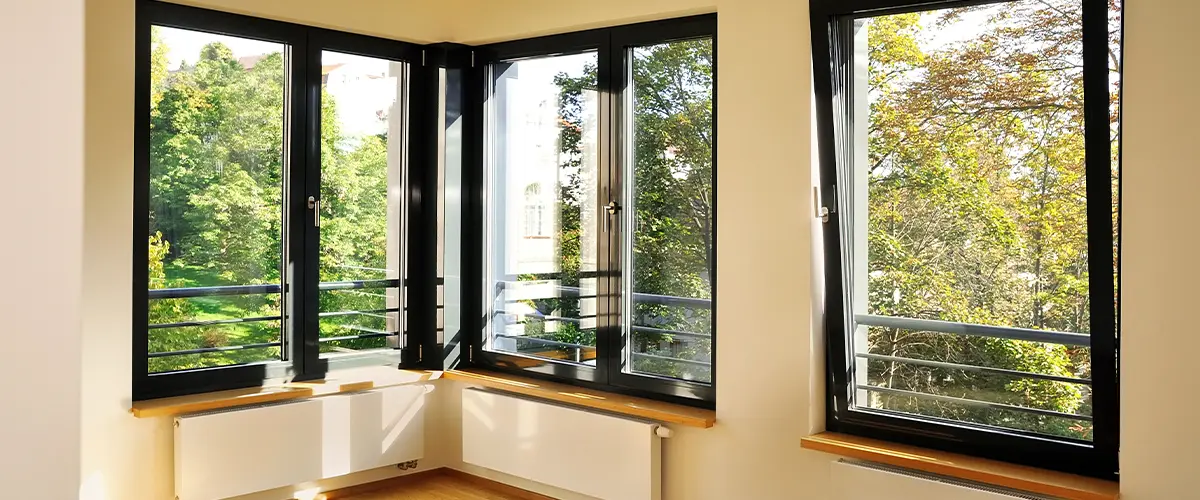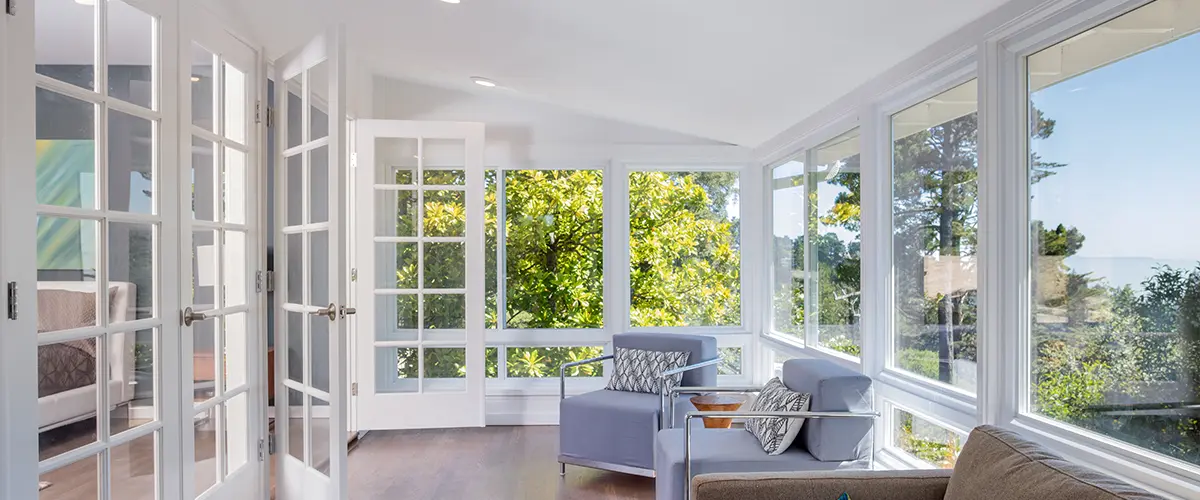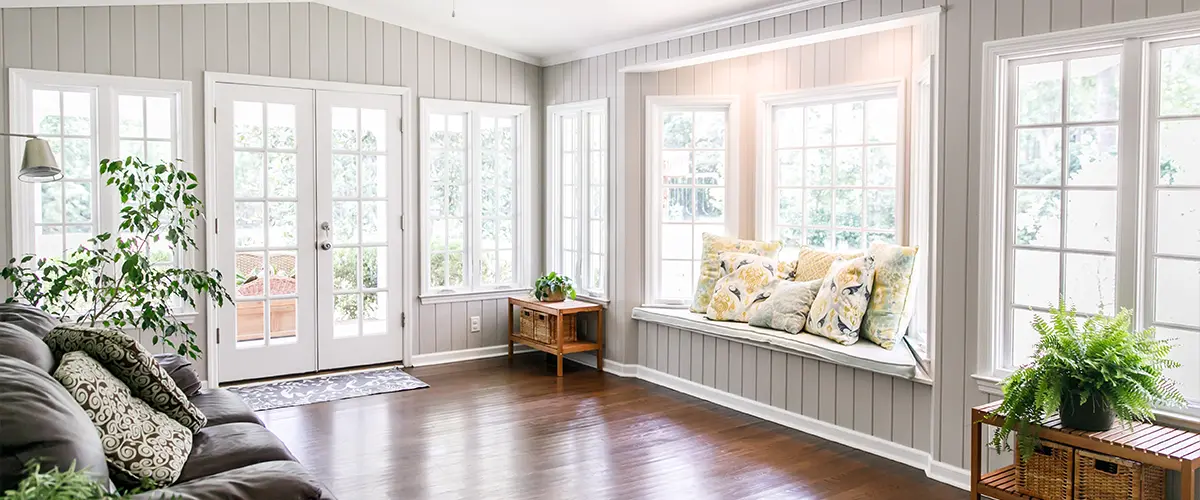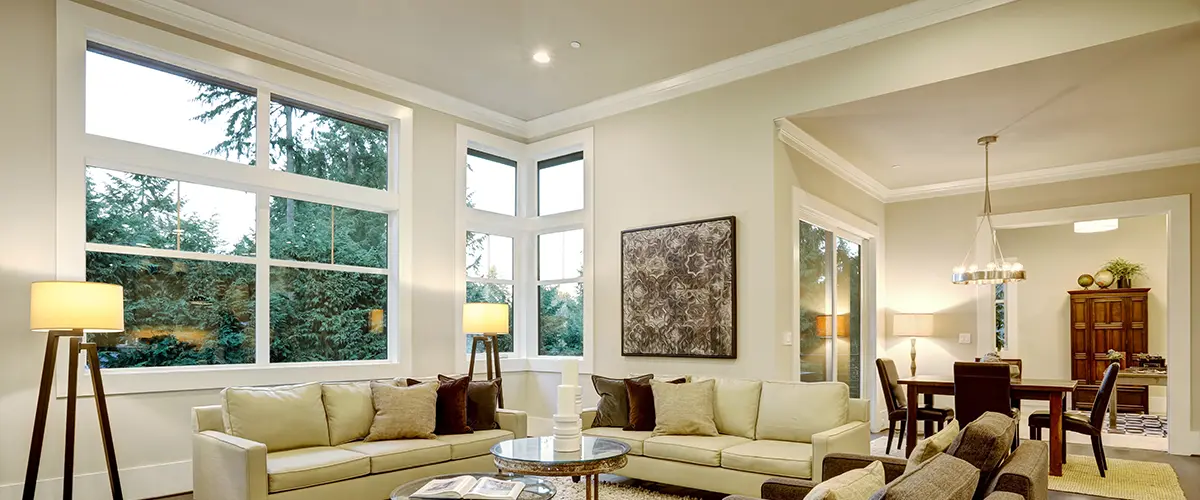The Ultimate Showdown: Argon Gas Windows vs Low E Glass
Selecting the right windows can significantly impact your home’s energy efficiency and comfort. This guide delves into the benefits of Argon Gas Windows versus Low-E Glass, providing essential insights to help you make the best choice for your home.
Discover the key differences and how they can transform your living space!

Understanding Argon Gas Windows VS Low E Glass
Definition and purpose of Low-E coating
Low-E coating, short for low-emissivity coating, is a thin metallic layer applied to glass. This innovative technology plays a crucial role in making windows more energy efficient.
The purpose of the Low-E coating is to reflect heat back into the room during winter and keep it out during summer. This mechanism helps in controlling solar heat gain and reducing heat loss through windows.
The presence of Low-E coatings on glass windows significantly boosts their ability to manage visible light and UV rays. It allows natural light to enter while blocking harmful ultraviolet radiation that can fade fabrics and furniture inside your home.
Energy efficient windows equipped with Low-E coatings are pivotal for maintaining indoor comfort year-round without skyrocketing energy bills. Next, we’ll explore the definition and purpose of argon gas in double pane windows.
Definition and purpose of Argon gas
Argon gas is a colorless, odorless, non-toxic gas used between the glass panes in double or triple glazed windows. Its main purpose is to improve thermal insulation. Argon gas works by filling the space between the glass panes, reducing the amount of heat that can pass through.
This helps in maintaining consistent indoor temperatures.
Due to its low thermal conductivity compared to regular air, argon gas significantly reduces heat transfer through the window. This results in better energy efficiency for homes and buildings.
Using argon gas windows can also help control solar heat gain, making them an ideal option for enhancing comfort and saving on energy bills.

Comparison of Low-E Glass and Argon Gas Insulation
- Thermal conductivity
Understanding the differences in thermal performance between Argon gas windows and Low-E glass is key for making an informed decision. Both options aim to improve your home’s energy efficiency but do so in distinct ways.
Here’s a quick comparison in terms of thermal conductivity:
FeatureLow-E GlassArgon Gas WindowsThermal ConductivityLower than standard glass due to the metallic coating that reflects heat.Lower than air-filled spaces, as Argon gas is a poor heat conductor.
This table simplifies the concept of thermal conductivity for both Low-E glass and Argon gas windows. It highlights how each technology works to reduce heat transfer, contributing to a more energy-efficient home.
- Cost
The cost comparison between Low-E glass and argon gas windows plays a significant role in decision-making for homeowners. Let’s explore the cost differences in a straightforward manner.
TypeInitial CostLong-Term SavingsLow-E GlassHigher than standard glassSignificant savings on energy billsArgon Gas WindowsSlightly higher than Low-E glassExtra insulation reduces heating and cooling costs.
Cost varies based on factors like brand, quality, and installation requirements. Both Low-E glass and argon gas windows present an upfront investment. They offer long-term savings through improved energy efficiency.
Benefits of Low-E Glass and Argon Gas Windows
- Improved energy efficiency
Low-E glass and argon gas windows offer improved energy efficiency, reducing heat loss in winter and minimizing heat gain during summer.
These advanced window technologies work to maintain consistent indoor temperatures, making it easier for your heating and cooling systems to regulate the climate within your home.
By keeping unwanted warm or cold air from seeping through the glass, these energy-efficient solutions help you save on utility bills while creating a more comfortable living environment.
Moreover, both Low-E coatings and argon gas infusions are designed to enhance the insulation of your windows, ultimately contributing to significant reductions in energy consumption.
- Enhanced comfort
Low-E glass and argon gas windows provide enhanced comfort by helping to maintain a consistent indoor temperature.
These innovative technologies significantly reduce the transfer of heat through the windows, creating a more comfortable environment year-round.
By minimizing drafts and cold spots in the winter while keeping out excessive heat in the summer, homeowners can enjoy a cozier living space without overworking their heating or cooling systems.
In addition to regulating temperature, low E glass and argon gas also help to reduce condensation on window surfaces, enhancing visibility and maintaining a clear view of the outdoors.
- Reduced heat loss
Argon gas windows and low-e glass both play a crucial role in reducing heat loss within your home. Argon gas is sandwiched between the glass panes, creating an insulating barrier that minimizes heat transfer.
Similarly, low-e coating helps to reflect interior heat back into the room while preventing outdoor temperatures from infiltrating indoors, thus decreasing overall heat loss.
Utilizing argon gas or low-e glass can significantly reduce heat loss in your home, leading to improved energy efficiency and lower utility bills over time.
- Protection against UV rays
To further enhance your home’s energy efficiency, consider the added benefit of protection against UV rays offered by both Low-E glass and Argon gas windows.
This safeguard helps to protect your furniture, flooring, and decor from fading due to prolonged exposure to sunlight.
The specialized coating on Low-E glass and the insulating qualities of Argon gas work in tandem to reduce the penetration of harmful UV rays into your living space.
The protective feature against UV rays provided by both Low-E glass and Argon gas windows ensures that your home’s interior remains vibrant while minimizing the impact of sun damage on your belongings.

Factors to Consider When Choosing Between Low-E Glass and Argon Gas Windows
- Climate
Climate plays a crucial role in deciding between low-E glass and argon gas windows. In colder climates, argon gas-filled windows are highly effective at reducing heat loss, enhancing insulation, and maintaining comfortable indoor temperatures.
Conversely, in hot climates, low-E glass is beneficial for blocking out UV rays and minimizing solar heat gain while still allowing natural light to enter the space. Understanding your local climate can help determine which option will best suit your energy efficiency needs.
The choice between low-E glass and argon gas should take into account how each option performs in different climate conditions.
In warmer regions, the focus may be on keeping interiors cool while allowing natural light through; meanwhile, cooler areas might prioritize insulation and preventing heat loss.
- Budget
When considering low-E glass and argon gas windows, your budget plays a crucial role. The initial cost of installing low-E glass is typically lower than that of argon gas windows.
However, in the long run, both options can offer significant energy savings, which may impact your utility bills over time.
It’s important to weigh the upfront costs against potential long-term savings when deciding between these two energy-efficient window options.
When investing in new windows, it’s also advisable to consider any available incentives or rebates that could offset the initial investment.
Additionally, some manufacturers offer financing options or payment plans that can make upgrading to low-E glass or argon gas windows more manageable within your budget constraints.
- Personal preference
Personal preference plays a crucial role in choosing between low-E glass and argon gas windows. Some homeowners prioritize cost-effectiveness and may opt for low-E glass due to its relatively lower price point.
On the other hand, individuals focused on maximizing energy efficiency might lean towards argon gas-filled windows, as they provide superior insulation properties.
Climate also influences personal preferences, with those living in harsher climates often favoring the enhanced thermal performance offered by argon gas.
When it comes to aesthetics, personal preference can be a deciding factor as well. Some individuals value the clarity of low-E glass, while others appreciate the potential savings and improved comfort provided by argon gas-filled windows Keywords: personal preference, low-E glass, argon gas windows.
Make the Smart Choice for Your Home
In the journey towards an energy-efficient and comfortable home, the choice between Argon Gas Windows and Low-E Glass stands paramount. Each option offers distinct advantages, from enhanced thermal insulation to superior UV protection, tailored to different climates and homeowner priorities.
As you consider your budget, personal preferences, and the specific needs of your climate, remember that the right windows can not only improve your home’s energy efficiency but also its living comfort.

FAQs
Elevate Your Home with the Right Windows
Consult with our experts at Windows for Life to find the perfect solution that aligns with your needs, and let us help you transform your space into the comfortable, energy-efficient haven you deserve. (615) 861-2315
